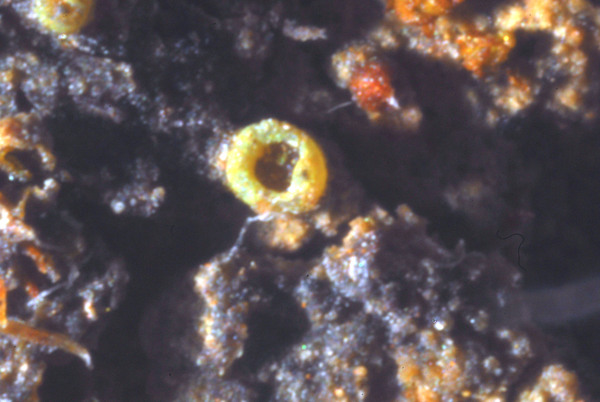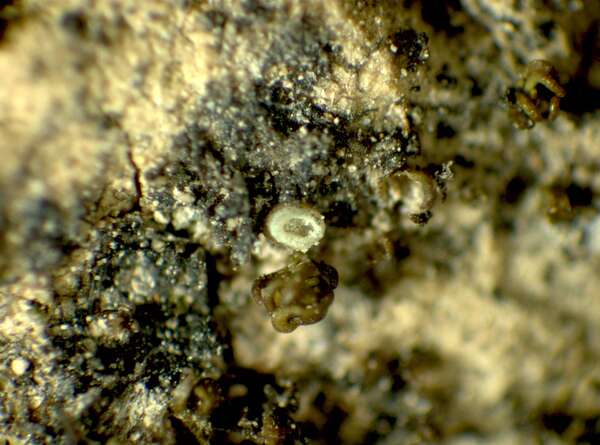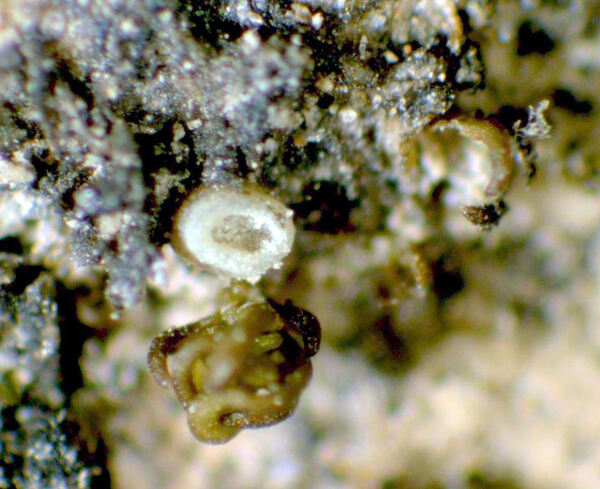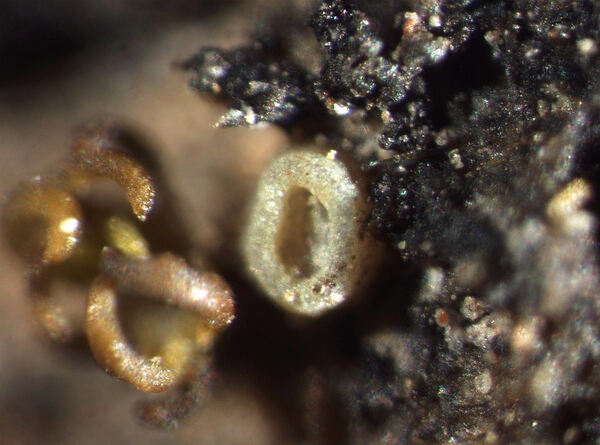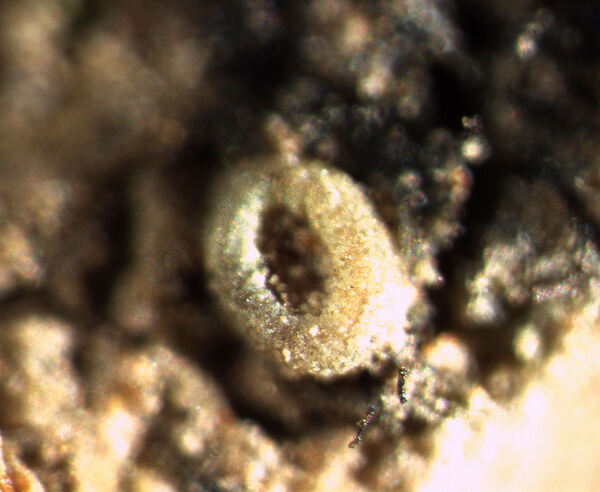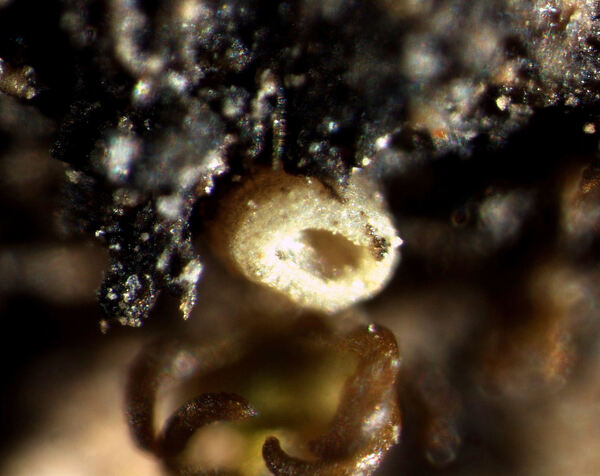Thelocarpon macchiae Nimis, Poelt & Puntillo
in Nimis & al., Bull. Soc. linn. Provence, 45: 259, 1994.
Synonyms:
Distribution: S - Pugl (Nimis & Tretiach 1999), Cal (Nimis & al. 1994, Puntillo 1996), Si (Nimis & al. 1994).
Description: Thallus crustose, probably not lichenized, reduced to small, 0.1-0.2 mm wide, scattered fruiting warts. Ascocarps apothecioid, sessile, with an immersed but soon exposed, brownish disc and a thick, raised, pale greenish yellow, round margin which does not contain algae, the latter sometimes only present in clumps within the substratum. Exciple colourless, with a thin outer layer of brownish-yellow granules, consisting of thin hyphae with more roundish cells (1-2 μm diam.) towards the base, otherwise of elongated cells with 1-1.5 μm thick lumina and relatively thick walls; paraphyses numerous, simple, rarely with a few short apical branches and still more rarely anastomosing, c. 0.7-1 μm thick, reaching the surface of the hymenium and forming a kind of epithecium, which is covered with yellow-brown granules. Asci 10-16-spored, numerous, long-cylindrical, with a more or less evident tholus, the base, I+ pale blue, the wall I+ yellowish to reddish yellow, in the tholus an inner layer shortly I+ blue, then fading into greyish. Ascospores 1-celled, hyaline, cylindrical to ellipsoid, 9.5-12(-16) x 5-6.5 μm. Photobiont absent, but chlorococcoid algae are scattered in clumps on the substrate. Spot tests: K-, C-, KC-, P-. Chemistry: pulvinic acid derivatives.Note: an easily overlooked species, perhaps more widespread in humid parts of Mediterranean Italy, on soil in openings of garrigue vegetation.
Growth form: Crustose
Substrata: soil, terricolous mosses, and plant debris
Photobiont: green algae other than Trentepohlia
Reproductive strategy: mainly sexual
Pioneer species
Commonnes-rarity: (info)
Alpine belt: absent
Subalpine belt: absent
Oromediterranean belt: absent
Montane belt: absent
Submediterranean belt: absent
Padanian area: absent
Humid submediterranean belt: absent
Humid mediterranean belt: very rare
Dry mediterranean belt: extremely rare
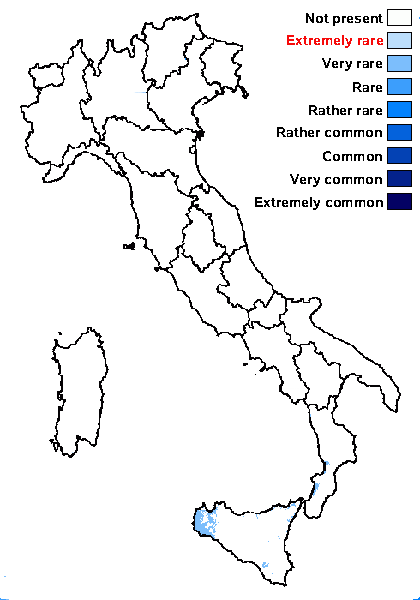
Predictive model
Herbarium samples
Growth form: Crustose
Substrata: soil, terricolous mosses, and plant debris
Photobiont: green algae other than Trentepohlia
Reproductive strategy: mainly sexual
Pioneer species
Commonnes-rarity: (info)
Alpine belt: absent
Subalpine belt: absent
Oromediterranean belt: absent
Montane belt: absent
Submediterranean belt: absent
Padanian area: absent
Humid submediterranean belt: absent
Humid mediterranean belt: very rare
Dry mediterranean belt: extremely rare

Predictive model
| Herbarium samples |
 INDEX FUNGORUM
INDEX FUNGORUM
 GBIF
GBIF
